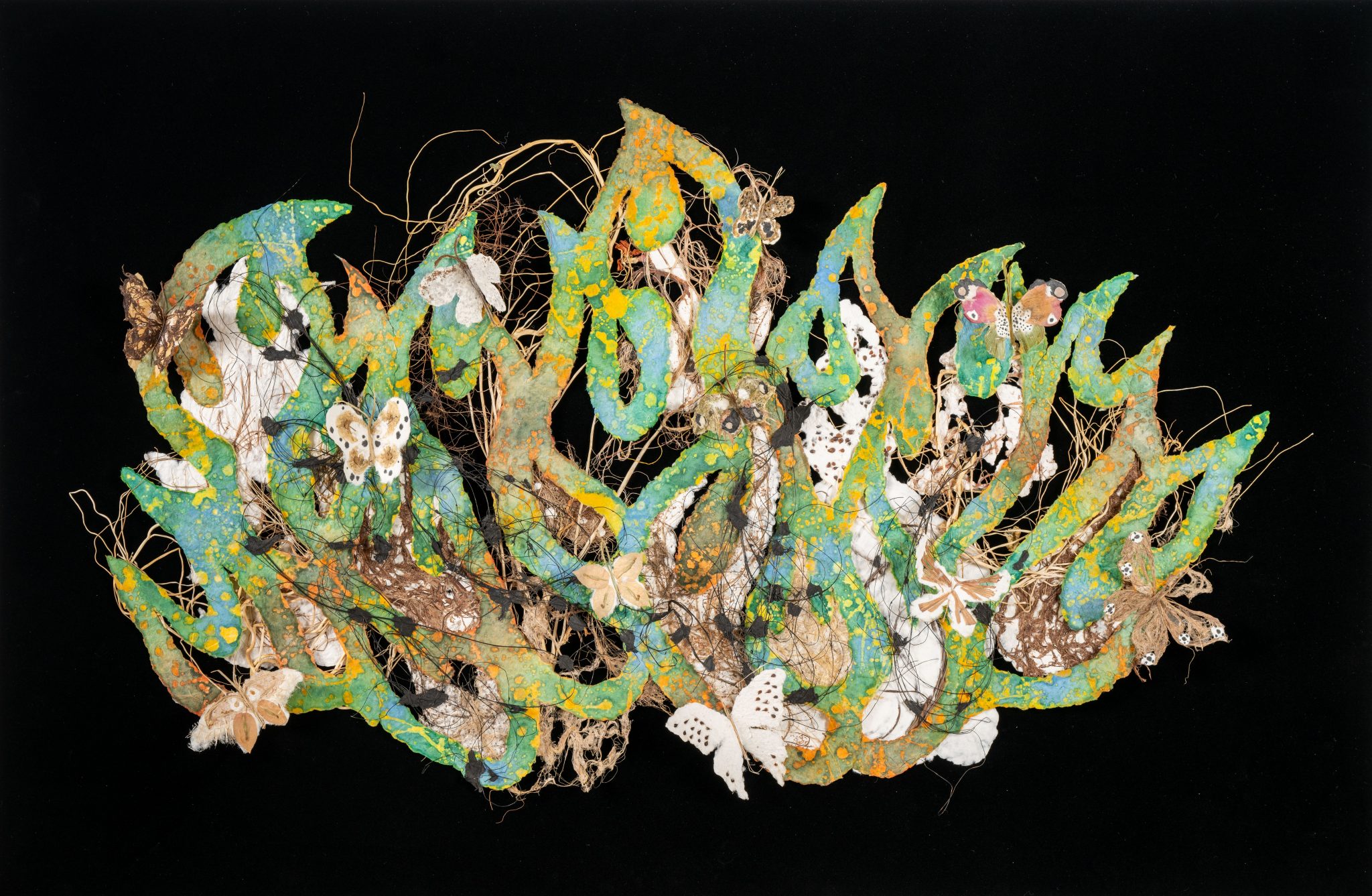Offerings for Escalante at Para Site, Hong Kong intertwine personal and political narratives to document a fraught history
On a fundamental level, Offerings for Escalante, an exhibition that comprises a film, works on paper, sculptures and lightworks, is about trying to make sense of the present through an examination of a particular landscape’s layered history. And simultaneously to posit possible visions for its future. In order to do this, artist duo Enzo Camacho and Ami Lien weave together narratives – personal, artistic and historical – that carry the residues of oppression and tragedy.
The duo’s interest in Escalante, the fourth largest island in the Philippines, dates from their discovered that it is home to a little-known seminal artwork with great art-historical value – the charged, magnetic, aggressive mural Angry Christ (1950), by the late queer Filipino-American modernist painter Alfonso Ossorio. Located in a modernist Church on the island, in the midst of a sugar plantation (an industry for which the island is known), the technicolour mural depicts Christ with his arms spread wide and a piercing gaze, and is both literally and conceptually confrontational – as though prompting his congregation to reflect on their sins, those of the people who came before them and those committed on and against the land on which they worship. Lien and Camacho have been regularly visiting Negros since 2017, conducting field research and engaging with local communities. It was during one of these visits they encountered the mural, which became a portal for the artists to examine the island’s layered past.
In a similar vein to the accusatory gaze of Angry Christ, themes of Negros’s sociopolitical context and history, a sense of visual confrontation and the continuation of a long-established feudal system are made evident in Lien and Camacho’s exhibition. The 1985 Escalante Massacre occurred during a peaceful protest against the regime of Ferdinand Marcos and its implementation of martial law. After 5,000 civilians gathered in the town centre and set up barricades to the entrance of the municipal plaza, paramilitary forces fired on the crowd, then continued to pursue and shoot those who ran to hide in the sugarcane fields. A total of 20 people were killed and numerous injured. This tragedy serves as the point of departure for Langit Lupa (2023), a film that is the centre- piece of the show, showcasing the testimony of the massacre’s survivors and revealing how it shaped and impacted the town’s future.
Lien and Camacho shot and assembled footage on location, including eyewitness testimonies and accounts of the incident combined with visual material related to the island’s landscape, both natural and urban. The film includes scenes of the massacre site recorded in 2023, with snippets of phytograms (a technique using the internal chemistry of plants to develop imagery on photographic emulsion) spliced between scenes. It’s neither a documentary nor a piece of investigative journalism: the artists present a localised perspective of the island and its history. Moreover, the way the scenes in the film regularly alternate between testimonies, the present-day site of massacre and the area’s natural landscape brings to mind the concept of history repeating itself. Prompting reflection on the country’s current political landscape, which is becoming a dynastic regime, with ‘Bongbong’ Marcos now the country’s president, and other family members occupying prominent government positions.
While the film is the central work of the exhibition, it’s the drawings made on handmade paper that leave a lasting impression. Newly commissioned works such as Sacred Heart (butterfly procession) (2023), Hunger Leaf (flesh wounds) (2023) and Social Volcano (lava moon) (2023) depict landscapes that are created with a literal salad of banana stalk, cilantro, coconut husk, garlic and onion skin, papaya seeds and numerous other natural materials locally found on Negros. These works intentionally recall and adapt Ossorio’s ‘wax-resist’ technique, which involved drawing in ink over dense layers of wax and watercolour, and integrating iconographies from local folklore – further emphasising reiterations of Negros’s physical and historical identity.
Offerings for Escalante at Para Site, Hong Kong, 21 October – 8 February
